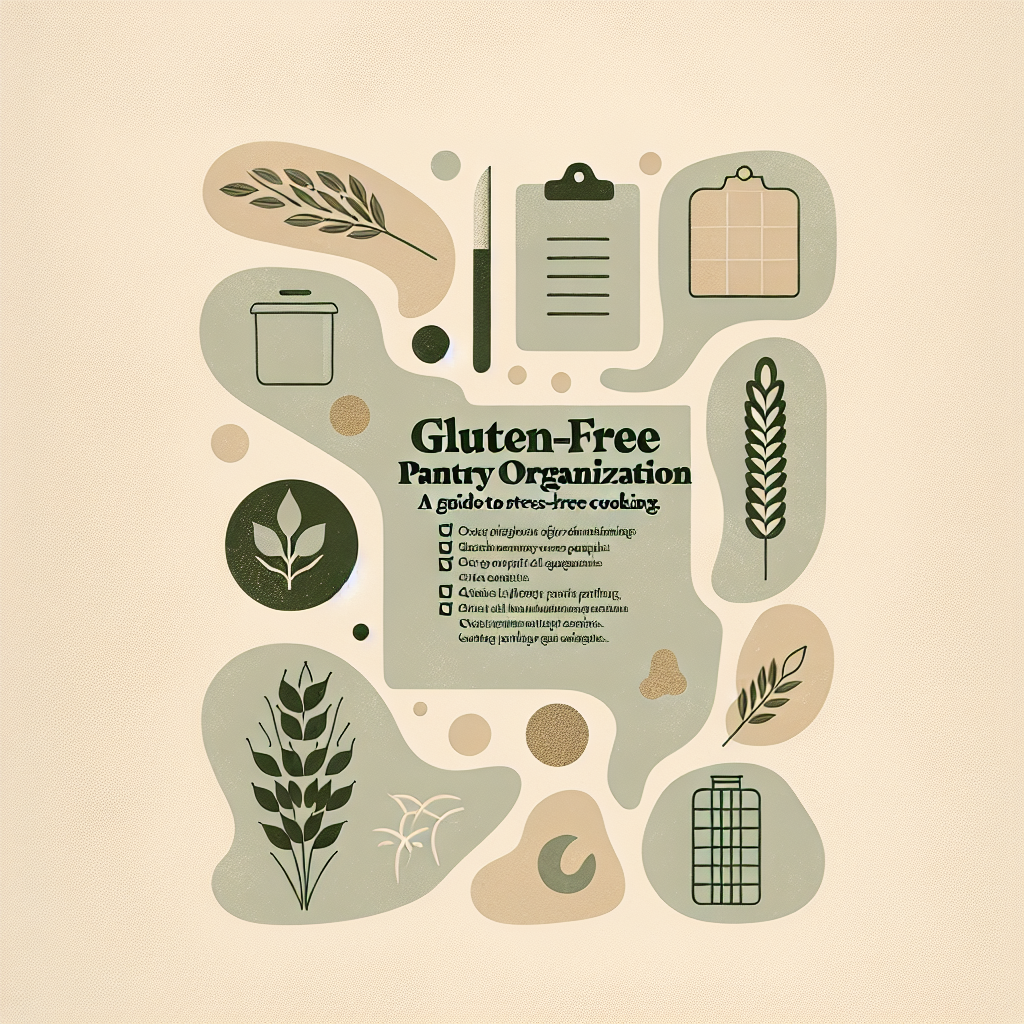Ever amount to an obstacle. Today, I want to share tips and tricks on how to organize your gluten-free pantry to make your life easier.
The beauty of a well-organized pantry is that it saves you time and reduces the stress of meal planning. Imagine opening your pantry door and knowing exactly where every bottle of gluten-free soy sauce, every bag of almond flour, and every box of your favorite quinoa pasta is located. Sounds like a dream, right? Well, with a little time and effort, you can turn that dream into reality.
Think about your pantry as prime real estate in your kitchen. The goal is to make the most out of every square inch while ensuring that all of your belongings are easily accessible and visible. It’s not just about organization; it’s about intuitively knowing where everything is located, so you spend less time searching and more time cooking. Who doesn’t want that, right?
So here’s your step by step guide to a functional, organized, gluten-free pantry.
**Step 1: De-clutter**
Before you start organizing, the first step is to pull everything out. Yes, literally everything. Start afresh. This gives you the opportunity to de-clutter your space and get rid of anything that you don’t need, like that odd box of gluten-loaded crackers that someone left at your place during your last get-together. It’s also a great opportunity to weed out any expired products. Despite our best intentions, we all end up with a few expired items that somehow find their way to the back of our pantries.
**Step 2: Categorize**
Next, you want to categorize your gluten-free goodies. Group similar products together based on your cooking and meal routine . For example, you might want to place all your gluten-free pasta, rice, and quinoa together in one section; your flour, bread crumbs, and xanthan gum together in the baking area; all your sauces, condiments, and spices in one area; and so on. Prioritize your most frequently used items and have them in the most accessible spots.
**Step 3: Containerize**
Now that you have organized your items into categories, consider getting some clear containers or bins. These are not only great for aesthetically pleasing organization (think Pinterest perfect pantry), but they’re also practical, as they allow you to see exactly what you have and how much. This can save you from buying more of something you already have and running out of something that needs to be re-stocked. Avoid plastic where you can and opt for more sustainable options like glass jars or metal bins.
For your bulk items, such as gluten-free flours or grains, look for large jars with tight sealing lids. For smaller items, like spices, choose smaller containers with screw-on lids. Consider getting stackable containers to maximize your space. Remember, always label your bins and jars, especially when it comes to flours like almond, coconut, or tapioca. Trust me, they can all start to look the same after a while.
**Step 4: Make it Beautiful**
Lastly, but certainly not least, make it beautiful – Possibly my favorite part of the process. Think about your space as a blank canvas. Fill it with colors, labels, aesthetically pleasing jars and boxes that bring you joy every time you open your pantry door. After all, a beautiful and organized pantry is way more pleasant to use, and let’s be honest, makes cooking a lot more fun too.
One of the most enjoyable aspects of the gluten-free lifestyle is getting creative in the kitchen. Whether that’s trying out new recipes, experimenting with different gluten-free flours like in this “Exploring Gluten-Free Flours” post or substituting gluten ingredients like in “Mastering The Art of Gluten-Free Substitutions”, it’s all a part of the journey. And having a well-organized pantry is key to that.
So, roll up your sleeves, put on your favorite playlist, and let’s get to organizing. Need more tips or advice on navigating your gluten-free life? Feel free to reach out in the comments. Your gluten-free lifestyle should feel less like a challenge and more like an adventure.
**Category: Lifestyle & Social**


